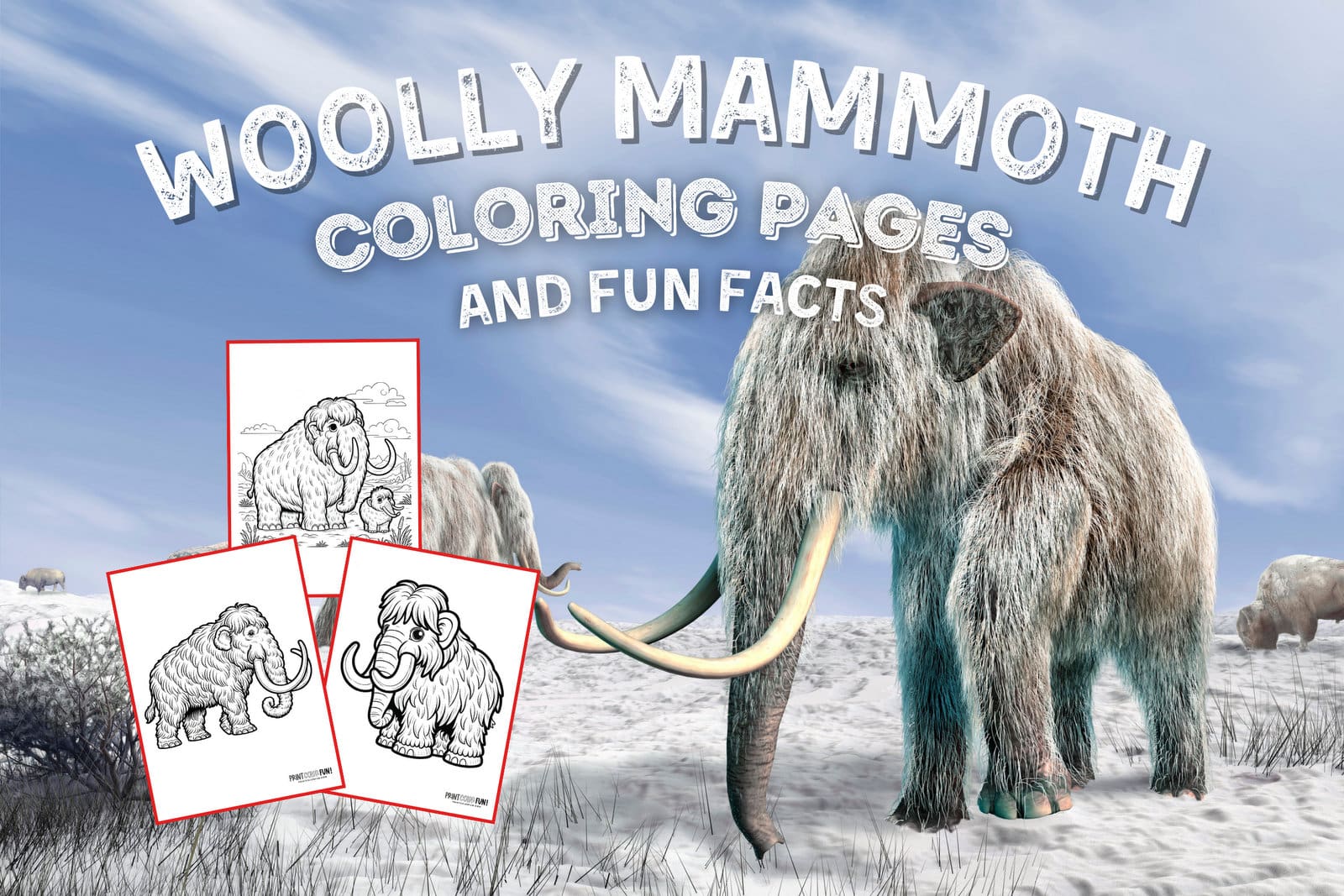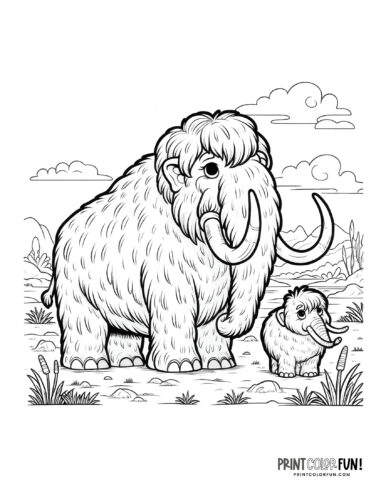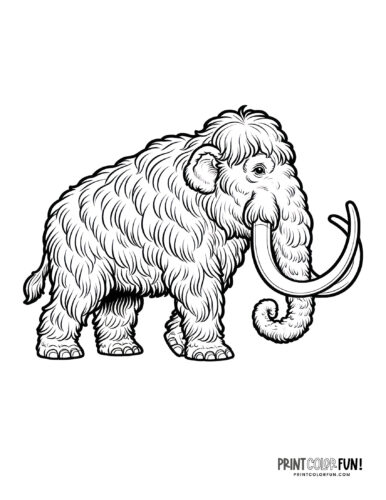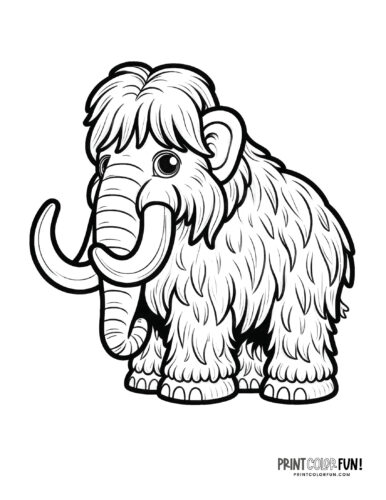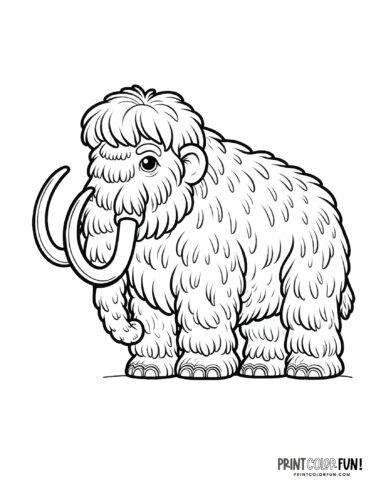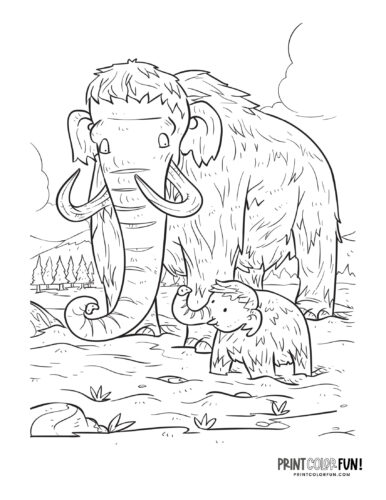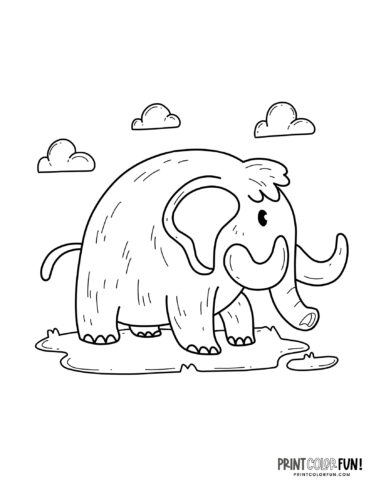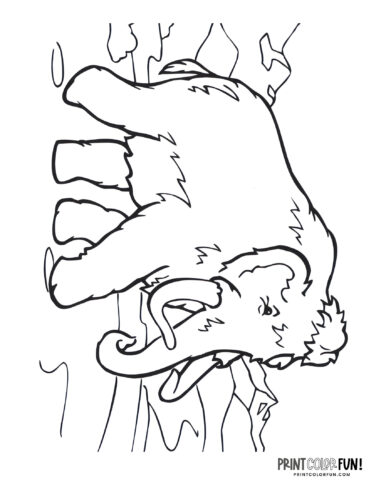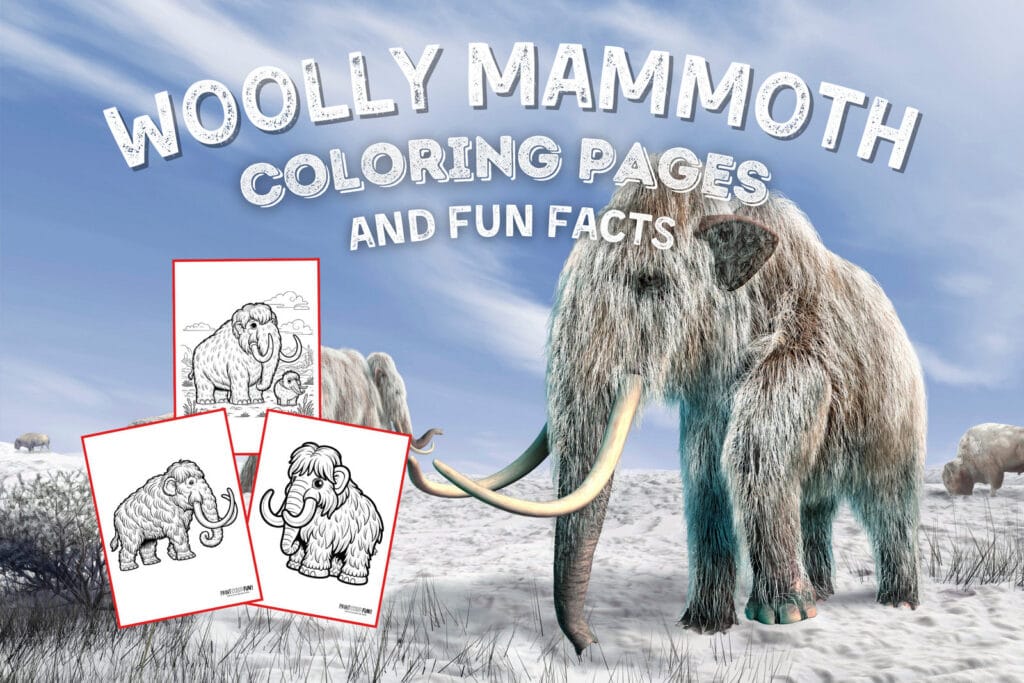
Learn a little about the past with these interesting details and printable coloring pages featuring the (now extinct) woolly mammoth — a distant ancestor of today’s elephant.
Cool facts about mammoths
Woolly mammoths were fascinating, furry creatures that roamed the Earth during the last Ice Age. Here are some facts about these ancient mammals that should interest kids and adults alike! (Click on any coloring page image below to get a larger printable version.)
The woolly mammoth’s size and appearance
- Large size: Woolly mammoths were enormous, standing up to 11 feet tall at the shoulder. This made them one of the largest mammals to have walked the Earth.
- Heavy coats: As their name suggests, woolly mammoths had a thick coat of fur, which included a woolly undercoat and longer guard hairs. (Guard hairs form the outermost layer of an animal’s coat. They are typically longer, coarser, and thicker than the underlying fur.) This warm coat helped them survive in the frigid Ice Age climate.
About mammoth tusks and teeth
- Curved tusks: Their tusks were incredibly long, sometimes extending up to 15 feet. These tusks were curved, and scientists believe they were used for fighting as well as for foraging under the snow.
- Unique teeth: Woolly mammoths had ridged molars, which were ideal for grinding tough, fibrous Ice Age vegetation.
Woolly mammoth habitat and diet
- Ice Age survivors: They thrived during the Pleistocene age, adapting well to the cold, dry habitats of the Ice Age.
- Diet: Their diet mainly consisted of grasses and other vegetation found in the steppe-tundra environment they inhabited.
Mammoth extinction and rediscovery
- Extinction: Woolly mammoths went extinct around 4,000 years ago, with a small population surviving on Wrangel Island ( a remote island located in the Arctic Ocean, north of the Russian mainland) until about 1700 BC.
- Frozen in time: In Siberia and other parts of the Arctic, entire frozen mammoths have been discovered, offering invaluable insights into their life and environment.
Comparing elephants to the woolly mammoths
While woolly mammoths were among the largest mammals of their time, the African elephant holds the title of the largest land animal alive today. Their larger size is an adaptation to different environmental conditions and evolutionary pressures compared to the ice age environment in which woolly mammoths lived.
Height: Woolly mammoths stood approximately 9 to 11 feet tall (about 2.75 to 3.35 meters) at the shoulder. In comparison, African elephants, the largest land animals today, can reach about 8.2 to 13 (2.5 to 4 meters) feet at the shoulder. Asian elephants are smaller, generally reaching about 6.6 to 9.8 feet (2 to 3 meters).
Weight: A typical woolly mammoth weighed between 6 to 8 tons, (approximately 12,000 to 16,000 pounds, or about 5,500 to 7,250 kilograms), with some large males possibly weighing up to 10 tons. African elephants weigh between 2.5 and 7 tons, with larger males occasionally exceeding this range. Asian elephants are lighter, usually weighing between 2.5 and 5.5 tons (approximately 5,000 to 11,000 pounds, or about 2250 to 5000 kilograms).
Body shape: Woolly mammoths had a more humpbacked shape with a high, domed skull, which is different from the relatively straighter back of modern elephants. This shape was likely an adaptation to their cold environment, aiding in body heat retention.
Tusks: Both woolly mammoths and modern elephants have tusks, but the mammoths’ tusks were generally longer and more curved. Some mammoth tusks could reach up to 15 feet in length.
Fur: The most striking difference is the woolly mammoth’s thick, shaggy coat of fur, including long guard hairs, which was essential for surviving in the Ice Age climates. Modern elephants, adapted to warmer climates, have sparse hair.
Elephants and mammoths evolved separately
Yes, elephants and mammoths were around at the same time, though they are not directly descended from one another. They are, however, closely related and share a common ancestor.
Coexistence: Mammoths and some early forms of modern elephants coexisted for a long time. Woolly mammoths (Mammuthus primigenius) lived during the Pleistocene epoch, which lasted from about 2.6 million years ago to about 11,700 years ago.
Modern elephants, including both African (Loxodonta africana and Loxodonta cyclotis) and Asian (Elephas maximus) species, also have their origins in the Pleistocene.
Common ancestor: Elephants and mammoths are part of the family Elephantidae, which also includes the extinct mastodons. Their common ancestor likely lived several million years ago, from which both mammoths and modern elephants diverged.
Separate evolutionary paths: While they share a common ancestor, mammoths and modern elephants evolved separately, adapting to different environments and conditions. Mammoths were more adapted to cold, Ice Age environments, while modern elephants adapted to warmer climates.

